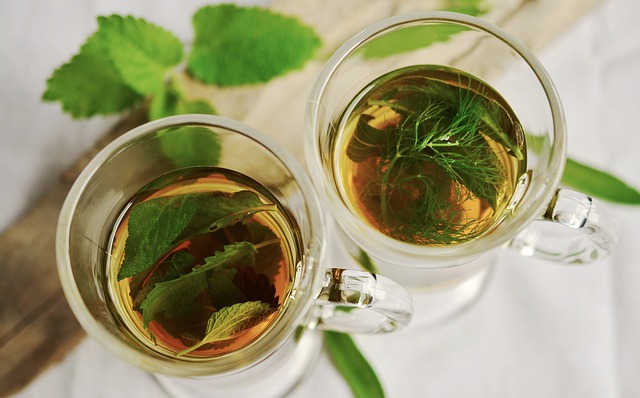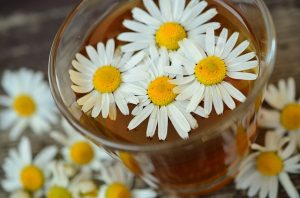
The Health Benefits of Tea and Tisanes
Every year, more studies come out about the health benefits of tea which is pretty great, because we love our tea at Modern Kids Design. And, as you know, we are dedicated to healthy living in every area and love to share inspiration, insights and ideas when we can. This week, we’re thinking about tea and here is what we came up with… Tea can be soothing or refreshing, healing or energizing. Hot or cold and with different types of leaves and add-ins, there’s pretty much a tea for everyone.
That’s why today, we’re breaking down tea and sharing information about the different types of teas and their benefits. So get ready to brew a cup and learn a little more about those flavorful leaves.
Types of Teas
All tea comes from one plant—camellia sinensis. Differentiation comes in the processing methods, specifically how long the leaves are allowed to oxidize. Teas that are not oxidized or with minimal oxidation are more subtle in flavor and have less caffeine. More highly oxidized teas have a stronger flavor and color and contain more caffeine. One tea—pu’erh—is even fermented to achieve a unique flavor.
Tea is naturally calorie-free. Calories are introduced with sweeteners or milk products. Tea also has less caffeine than coffee, plus it’s chock-full of antioxidants. That’s a lot of wins.
Most teas taste best brewed from loose leaves, but prebagged teas can be helpful when traveling. To brew tea, check the instructions for that specific leaf type. White teas require cooler water and brew for less time, whereas black teas require boiling water and around five minutes of brew time. Green tea falls somewhere in between. Specific brands will ask for different brewing techniques depending on what flavors have been added to the tea. For best results, always check the instructions and set a timer.
White Tea
Characteristics: White tea is unoxidized and hand-picked at a young age. It has a subtle flavor and is brewed for less time with water that is below the boiling point. It is slightly caffeinated.
Benefits: One interesting thing is research is being done where they are looking into whether white tea can help those with diabetes. So far, white tea has shown to improve glucose tolerance and reduce LDL cholesterol, though more studies will need to be done. Other studies indicate that the antioxidants in white tea may help with cardiovascular health and provide cancer-fighting benefits.
Popular flavors: Pre-made mixes and tea bags are a great way to sample different types of white tea. Some organic food stores sell white tea leaves in bulk and packaged in containers. Jasmine, acai, peach, and blueberry are popular flavor mixes. Silver Needle white tea is one of the most popular variety of white tea.

Green Tea
Characteristics: Green tea is earthier than white tea. It is allowed to oxidize slightly, then fired to stop the process. It has more caffeine than white tea, but less than black. Different varieties of green teas carry different flavor profiles, so be sure to experiment to find your favorite!
Benefits: Green tea can be found in everything from vitamins to facial scrubs. Most studies done on tea feature green tea, though black tea is more popular worldwide. Green tea as catechin (a flavanol) and a high level of polyphenols. Green tea is believed to assist with weight loss, lower the risk of stroke, and assist with cardiac health. Other studies suggest that green tea may also help increase muscle endurance and help you exercise longer. The antioxidants in green tea can help fight free radicals and may reduce the risk of certain cancers.
Popular flavors: Jasmine Green Tea is a consistent favorite. Green tea is also often flavored with mint, lemon, ginger, honey, and more. Popular varieties include Matcha, Sencha, and Gunpowder Green. Even if you don’t like drinking green tea, there are numerous products that contain green tea extract to help you get some of the benefits of this amazing drink.
Oolong Tea
Characteristics: Heartier than green tea but lighter than black, Oolong has about 30 milligrams of caffeine. It is oxidized further than green tea and allowed to wilt. Oolong flavor varies depending on how long it is oxidized and roasted.
Benefits: Oolong may aid in weight loss and help you burn more calories.
Popular flavors: Depending on oxidation, oolong can be light or floral or more robust and chocolatey. It has yet to gain popularity in the U.S. to the levels of green or black tea, but this introduction to oolong does a great job of explaining why it is a delicious addition to your tea drawer.
Black Tea
Characteristics: Black tea is the most popular variety of tea. There are numerous variations made by differences in the processing methods. Black tea is wilted and allowed to oxidize for the longest. It has the highest caffeine profile, which is still less than that of coffee.
Benefits: As with other teas, black tea may aid with weight loss, reduce risk of stroke, and improve cardiovascular health. Black tea is rich in antioxidants, namely theaflavin and thearubigin.
Popular flavors: Earl Grey, English Breakfast Tea, Darjeeling, and several varieties of chai teas are made with black tea leaves. Black teas run the gamut from floral to fruity to spicy.
Pu’erh Tea
Characteristics: Pu-erh isn’t often listed as a tea variety, either because it is considered to be a black tea or because it isn’t as popular or well-known in the U.S. Pu-erh is a highly oxidized tea that is pressed into a shape and fermented for years.
Benefits: Extensive studies have yet to be done on pu-erh tea but, in addition to the traditional benefits of tea, fermenting may provide some “gut-friendly” benefits from the microflora that assist in the process.
And where do herbal teas fit in? Well, they’re actually tisanes.

Tisanes
Tisanes, more commonly called herbal teas in the U.S., are made from numerous different plants and spices. They are also called “infusions.” Chamomile tea and peppermint tea are two common tisanes which have proven to be relaxing and invigorating, respectively. Surprisingly, while fewer studies have been done on herbal teas, it is believed that chamomile tea may help you catch some z’s and that peppermint and ginger tea may help with stomach concerns and even curb nausea.
Rooibos, which some may market as a tea, is also a tisane as it does not come from the camellia sinensis plant. Rooibos, or red tea, comes from a South African bush called the aspalathus linearis. It does not have any naturally occurring caffeine and is popular in herbal mixes. Rooibos has many antioxidants that may help it provide some of the same benefits of tea, including fighting free radicals.
So, what do you think of tea? Are you ready to get steeping? We’d love to hear about your favorite tea or what you’d like us to to write about going forward! We appreciate the ideas you share! As always, feel free to reach out at healthyliving@modernkidsdesign.com. Thanks for reading!

